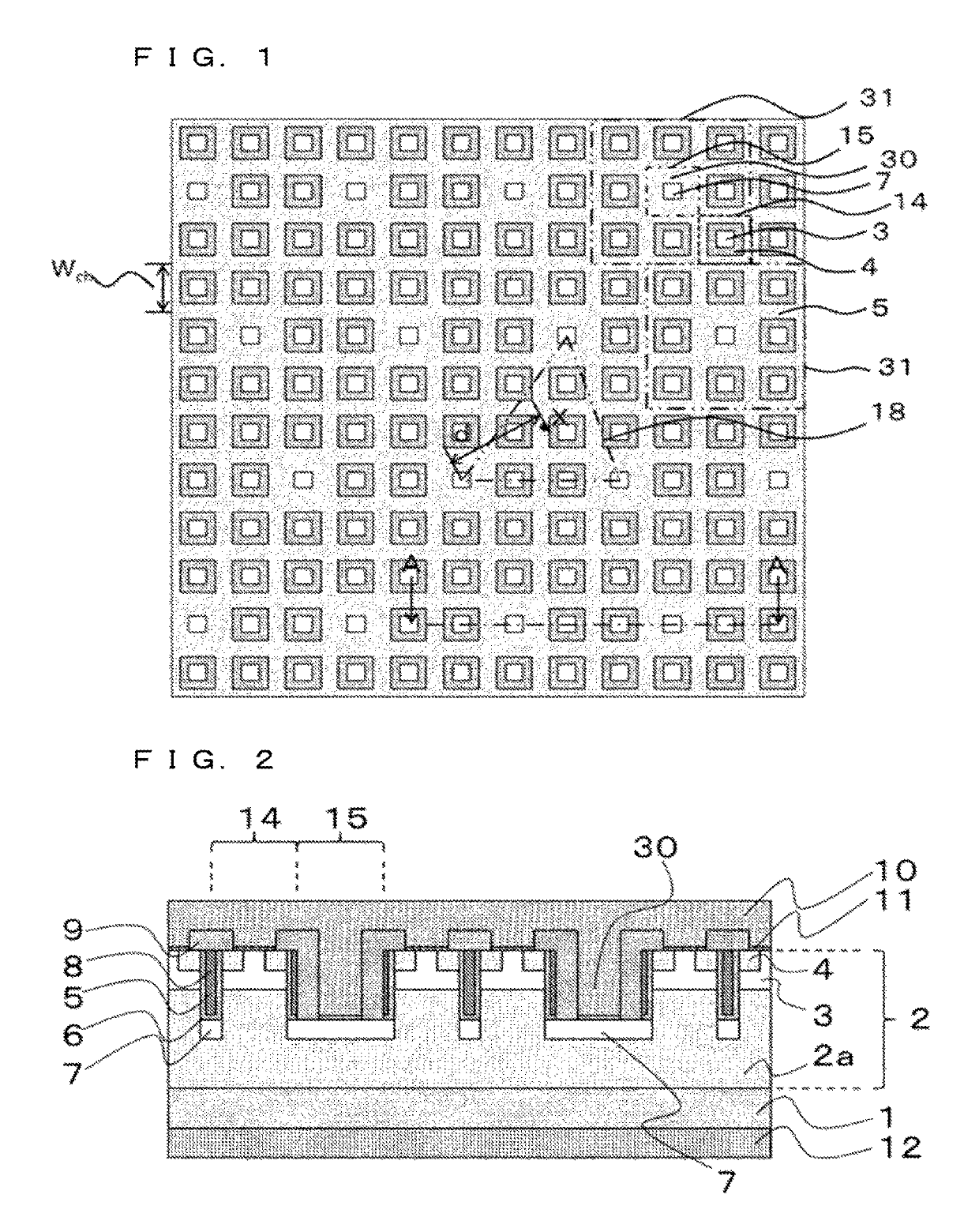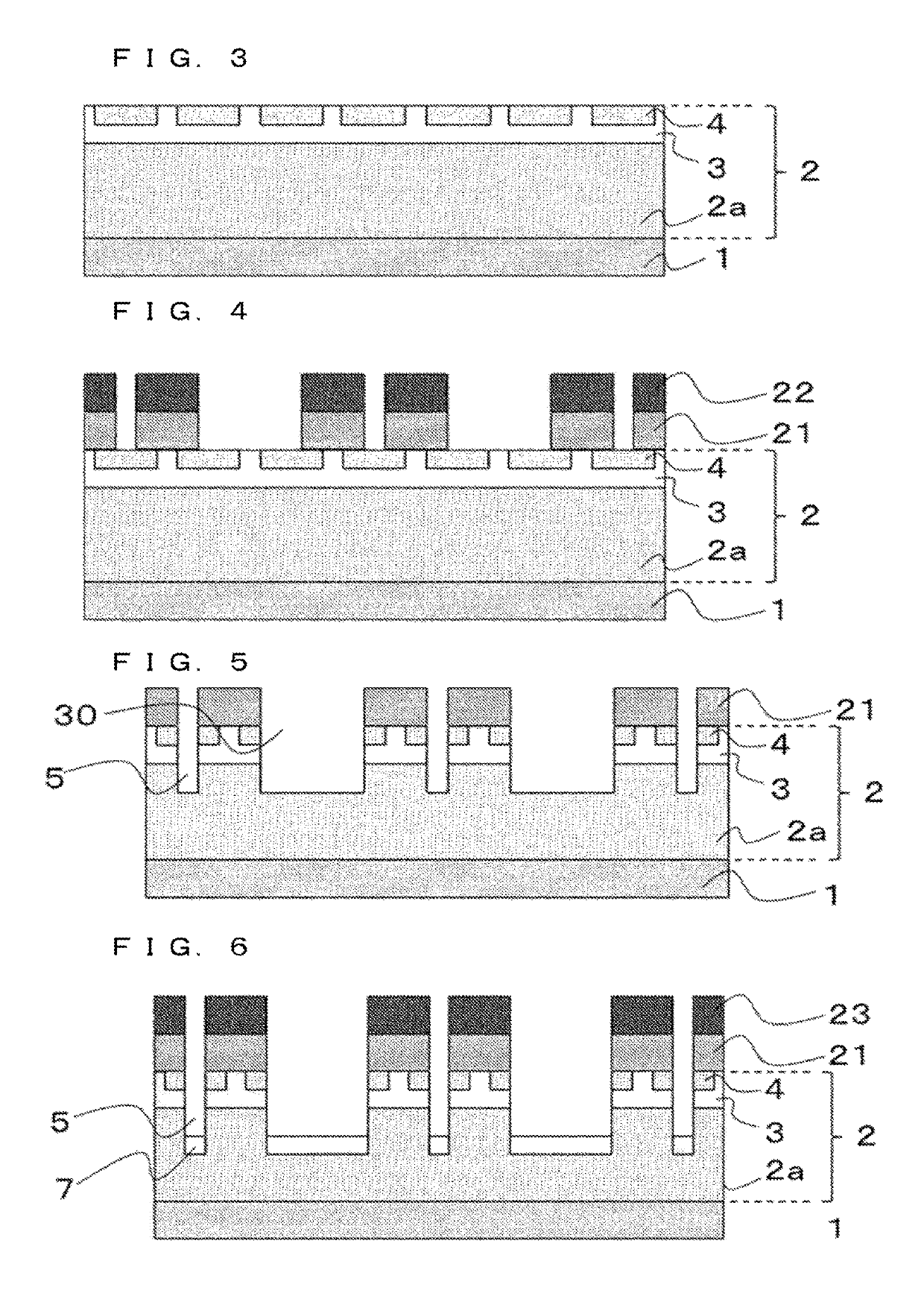Semiconductor device
a technology of semiconductors and insulating films, applied in the direction of semiconductor devices, basic electric elements, electrical appliances, etc., can solve the problem of low reliability of insulating films, and achieve the effect of improving short-circuit withstand capability and increasing on-resistan
- Summary
- Abstract
- Description
- Claims
- Application Information
AI Technical Summary
Benefits of technology
Problems solved by technology
Method used
Image
Examples
first embodiment
[0031]First, a semiconductor device according to a first embodiment of the present invention will be described. FIG. 1 is a plan view for explaining the semiconductor device according to the first embodiment of the present invention. Illustrated herein as an example of the semiconductor device is a trench gate MOSFET that is a silicon carbide semiconductor device including silicon carbide (SiC).
[0032]The present embodiment is not limited to the description below, and can be modified as appropriate within the scope of the present invention. For easy understanding, the scales of the members may differ from actual ones in the drawings below. The same applies to the scales among the drawings.
[0033]FIG. 1 illustrates a MOSFET region that is part of an active region of the trench gate MOSFET. The MOSFET region is formed of cell regions 14, which are surrounded by dotted lines, and protective contact regions 15, which are surrounded by alternate long and short dashed lines. The cell region...
second embodiment
[0111]FIGS. 16 and 17 are tops views of a semiconductor device according to a second embodiment. The semiconductor device of the present embodiment is characterized in that channel regions remote from the protective contact regions 15 are deactivated. The second embodiment is similar to the first embodiment in the other respects. The present embodiment achieves an effect of improving short-circuit withstand capability.
[0112]With reference to FIGS. 16 and 17, if circles 24 are each drawn around the protective contact region 15, deactivation channels 25 that are caused not to function as MOS channels may be channels located outside the circles 24.
[0113]In this case, the radius of the circle 24 is one or more times and three or less times, desirably, two or less times the width Wch of the cell region 14. This is because an on-resistance increases due to an increase in the ratio of deactivated channels if the radius is smaller than one time the width Wch, and an effect of improving shor...
PUM
 Login to View More
Login to View More Abstract
Description
Claims
Application Information
 Login to View More
Login to View More - R&D
- Intellectual Property
- Life Sciences
- Materials
- Tech Scout
- Unparalleled Data Quality
- Higher Quality Content
- 60% Fewer Hallucinations
Browse by: Latest US Patents, China's latest patents, Technical Efficacy Thesaurus, Application Domain, Technology Topic, Popular Technical Reports.
© 2025 PatSnap. All rights reserved.Legal|Privacy policy|Modern Slavery Act Transparency Statement|Sitemap|About US| Contact US: help@patsnap.com



